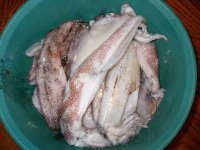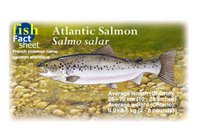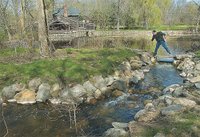
May is Squid Fishing time in Rhode Island and Connecticut. The following text was taken from the Squidfish.net forum. The postings are from April 27 to May.
Goat Island Bridge, Rhode Island: There is a bridge between Newport city and Goat Island and that's where people fish for squid. The bridge is not that long, just a couple hundred yards. On Goat Island there is a Hyatt Hotel and a yacht club. The bridge is well lighted so squid are attracted to the area. People are allowed to fish only on one-side of the bridge so it gets crowded. On weekend nights a lot of people bring lanterns and the whole place is lit up and it's quite a sight.
Squid fishing in Rhode Island is the best around the East Coast. You can expect at least 2 gallon worth around the fall season. Spring season yields at least 5 gallon a person. It does get mighty crowded though. Elbow tight...??? I would rather say hand tight. That's pretty much all you can get over the bridge if you come late.
From Dartmouth to Newport, you want to drive 195 west to 77 to 138. You're better off using MapQuest and find directions to the Hyatt hotel in Newport. It's at Goat Island, and we fish on the bridge.
Anyways, first of all u need yourself a lamp with a rope and have it hanging off the bridge to light things up. Since you're a newbie at this, I recommend that you use a propane lamp. I use a petromax lamp (conventional fuel). Bird style jigs such as 'Yo-zuri's ultra lens' are best. Pink is the preferable color. If not opt for green. When getting jiggy, you want to drop your rig with the 1 once sinker/2 ounce if the current is moving too fast, to the bottom and gently raise the rod tip. And drop it down gently.
Mackerels too! Not a lot of squid, but plenty of Mackerels!!! I would like to call it the Big Mack-Attack! It was raining awfully hard but the macks ruled Goat Island!!! The macks ranged from a foot to 1 1 /2 ft! Bit Macks!!! There were so man people snagged them on their squid jigs! Awesome!!! My father racked up about 50 or so of these colossel macks!






